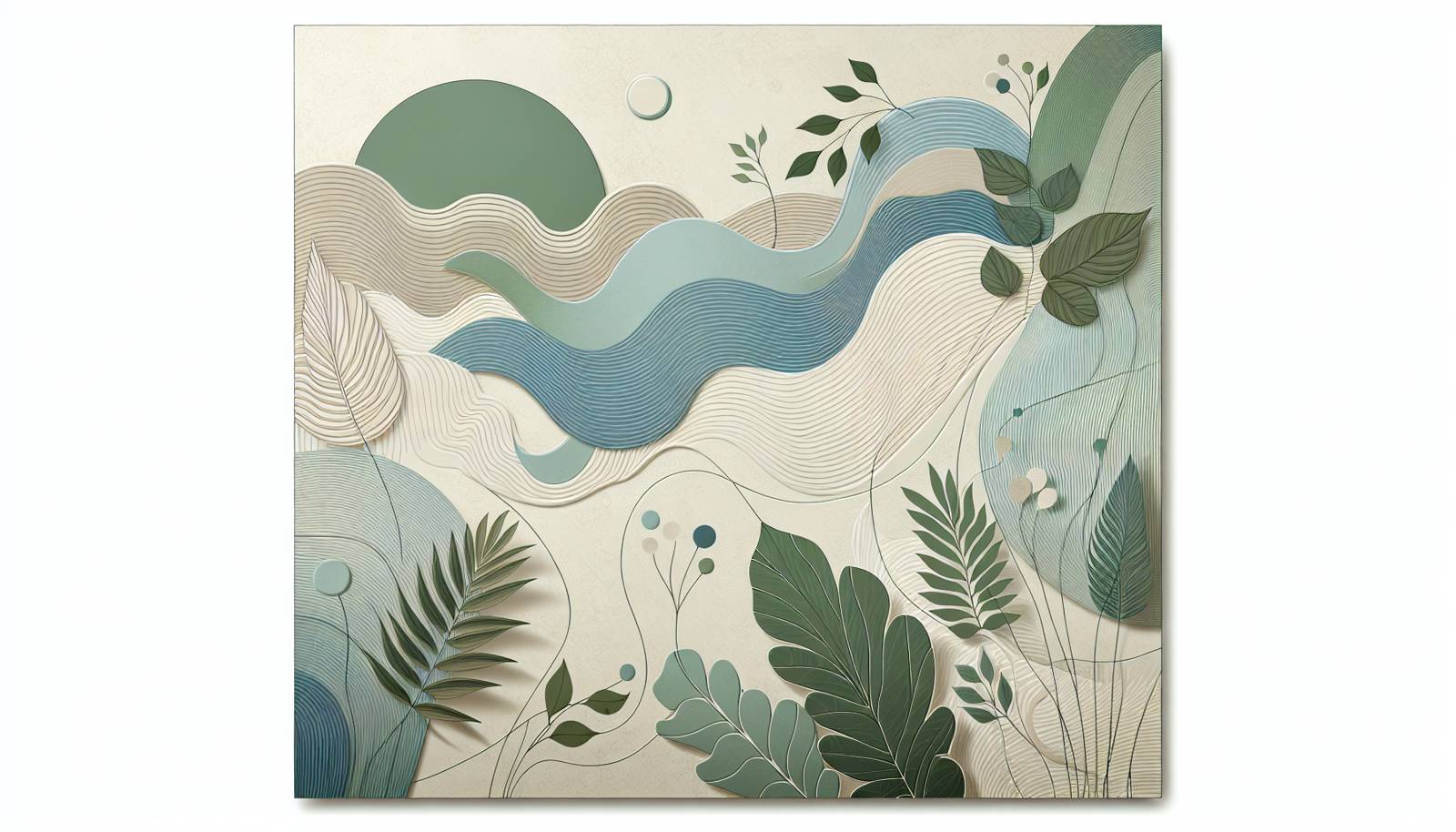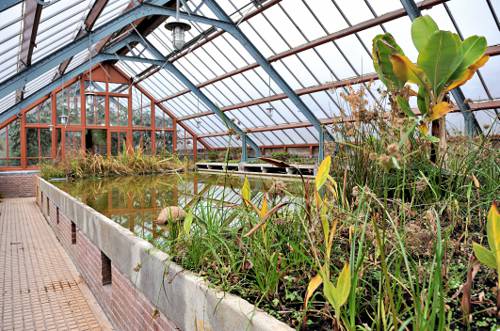
FAQ About Indoor Pond Plant Integration

What are the benefits of integrating plants into indoor ponds?
Integrating plants into indoor ponds can offer numerous benefits, including improved aesthetics, water purification, and the creation of a balanced ecosystem. Plants help in oxygenating the water, which is beneficial for any aquatic life present. They also absorb excess nutrients, reducing algae growth and improving water clarity. Additionally, plants can provide hiding spots for fish and other pond life, contributing to their well-being.

Which plants are best suited for indoor pond integration?
Several plants are well-suited for indoor pond integration, including water lilies, which are known for their striking flowers and leaf coverage that can shade the water from the sun; anacharis, which is excellent for oxygenating the water; and the umbrella palm, which adds vertical interest to the pond setting. Choosing plants that adapt well to indoor lighting conditions is crucial.

How do indoor plants in ponds help maintain water quality?
Indoor pond plants contribute to maintaining water quality by acting as natural filters. They use up nutrients that would otherwise foster algae growth, hence preventing algal blooms. Additionally, plants such as water hyacinths have root systems that trap debris and sediment, further helping to keep the water clear and clean.

Can indoor pond plants survive in low light conditions?
Some indoor pond plants can survive and thrive in low light conditions. Plants like Java fern and anubias are known for their low light tolerance and are ideal for indoor ponds with minimal natural sunlight. However, supplemental lighting may be necessary to ensure optimal growth and health of most plant species.

What is the role of aquatic plants in a pond ecosystem?
Aquatic plants play a vital role in pond ecosystems. They provide habitat and food for fish and other aquatic organisms, contribute to the oxygenation of the water, and help control nutrient levels by absorbing nitrates and phosphates that could otherwise promote algae growth. This leads to a healthier and more balanced pond environment.

How can I prevent algae growth in an indoor pond with plants?
To prevent algae growth, ensure that you have a suitable balance of plants that absorb nutrients efficiently. Avoid overfeeding fish, as excess food contributes to nutrient buildup. Regular cleaning and maintenance of plants and pond components are also essential. Additionally, consider using plants like hornwort and duckweed, which are known to suppress algae by competing for nutrients.

What are some common mistakes in integrating plants in indoor ponds?
Common mistakes include choosing the wrong plants for the lighting conditions or pond size, overcrowding the pond with too many plants, and neglecting regular maintenance. It's crucial to select plants that meet the lighting and space needs of the pond, monitor their growth, and trim them as necessary. Proper selection and care can prevent problems like water quality issues and plant die-off.

How do I ensure the proper health of plants in an indoor pond?
To ensure the health of indoor pond plants, provide adequate lighting, whether natural or artificial, based on their needs. Regularly check water quality, ensuring appropriate pH and nutrient levels. Prune plants to encourage healthy growth and remove any dead or decaying parts to prevent contamination of the water. Lastly, acclimate new plants gradually to the pond environment to avoid shock.

Do I need any special equipment for indoor pond plants?
Setting up an indoor pond with plants might require specific equipment such as grow lights for plant illumination, filtration systems to maintain water quality, and possibly heaters if tropical plants are used. Choosing equipment based on the needs of both the plants and any aquatic life is critical for the sustainability of the ecosystem.

How do indoor pond plants affect fish health?
Indoor pond plants can positively affect fish health by stabilizing water conditions, providing oxygen, and offering physical shelters and breeding areas. Healthy plant life reduces stress for fish through improved water quality and more naturalistic habitats. However, it's important to ensure that plants do not occupy too much space, which could limit the swimming area for fish.

What types of lighting are suitable for indoor pond plants?
For indoor pond plants, full-spectrum LED grow lights are a popular choice as they provide the necessary light spectrum for photosynthesis while being energy efficient. Fluorescent lights are also effective and come in various intensities to suit different plant needs. It's vital to match the lighting type and intensity to the specific requirements of the plant species you are cultivating.

Can I use soil for planting in indoor ponds?
Soil can be used in indoor ponds, but it's essential to use pond-specific soil or aquatic plant substrates that will not cloud the water or release excess nutrients. These soils are usually heavier with low nutrient content to avoid promoting algae growth. It's also recommended to use containers for plants to keep the substrate contained and easy to manage.

How often should I change the water in an indoor pond with plants?
The frequency of water changes in an indoor pond with plants depends on the pond size, plant density, and presence of fish. Generally, a 10-15% water change every two weeks is recommended to maintain water quality without causing stress to plants and aquatic life. Monitor water parameters regularly to adjust the frequency of changes as needed.

Can certain plants be harmful to fish in indoor ponds?
While most aquatic plants are beneficial, some can be harmful due to toxicity or physical properties. For instance, certain houseplants introduced into ponds might leach harmful chemicals. Always research or consult a professional before adding new plant species to ensure they are non-toxic and have been sufficiently acclimated to pond conditions.

What temperature is ideal for indoor pond plants?
The ideal temperature for indoor pond plants varies depending on the species. Many tropical plants prefer temperatures between 75-80°F, while temperate species can thrive in cooler conditions around 60-70°F. It's crucial to select plants that suit the temperature range of your indoor environment, or adjust water heating as needed.

Are there any plants that can survive fully submerged in an indoor pond?
Yes, there are several plants that can survive fully submerged, such as anacharis, hornwort, and cabomba. These submerged plants are excellent for oxygenating the water and providing habitat for aquatic life. When selecting submerged plants, consider their growth rate and the impact they may have on oxygen levels and water quality.

How do I introduce new plants into an indoor pond?
When introducing new plants into an indoor pond, start by rinsing them thoroughly to remove any pests or chemicals. Allow them to acclimate gradually to the pond's temperature and water conditions, which can be done by floating the plants in the pond water before planting. Secure them properly to prevent floating and monitor them closely for signs of stress or disease.

Is it necessary to fertilize indoor pond plants?
Fertilizing indoor pond plants is not always necessary, as they often obtain sufficient nutrients from fish waste and decomposing organic matter. However, in systems with low nutrient levels, aquatic plant fertilizers may be applied sparingly to support healthy growth. Use fertilizers specifically designed for aquatic plants to avoid harming fish and other aquatic life.

What are some decorative plants suitable for indoor ponds?
Decorative plants such as water lilies, lotus, and mosaic plants can enhance the aesthetic appeal of indoor ponds with their vibrant colors and unique leaf patterns. Choosing a mix of flowering and foliage plants can create a visually stunning water feature that enhances the indoor environment.

Do indoor pond plants require any special care during winter?
During winter, some indoor pond plants may require additional lighting and heating to mimic their natural growing conditions, especially tropical species. Ensure the water temperature remains stable, and gradually adjust light exposure to prevent stress. For temperate plants, simply reducing light and maintaining cool temperatures may suffice, as some may enter a state of dormancy.
